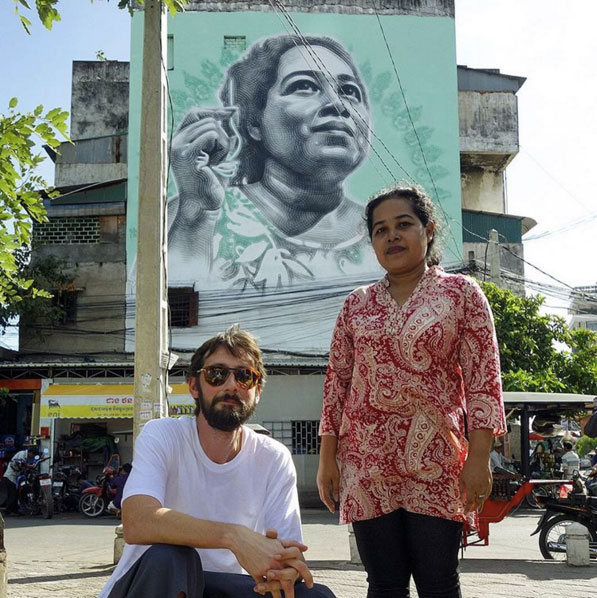Phnom Penh municipal authorities recently removed a large mural painted by internationally acclaimed artist Miles “El Mac” MacGregor from the White Building on the grounds that the artist did not have formal permission from the authorities and that the subject of the mural did not represent Khmer tradition. City Hall’s move has sparked strong public criticism, especially from city residents.
A large number of them took to social media to express their disapproval. Some of them even accused the authorities of having double standards, allowing large beer and cigarette promotion posters to appear publicly in the cityscape but banning a mural perceived as an inspiring piece of artwork.

A superficial analysis would show that the subject of the criticism was the removal of the painting. However, on closer examination, it is clear that the issue is embedded in the broader tension between the municipal government and city residents in their struggle for power amid Phnom Penh’s rapid spatial and socioeconomic transformation.
Urban space is a potent site of political power and a major source of revenue for the municipal government. Through its ability to regulate the use of city space by way of granting permission, imposing bans, issuing orders and so on and so forth, Phnom Penh municipal authorities expect to demonstrate their relevance in the enforcement of urban governance and revenue collection.
However, in light of the city’s rapid spatial and socioeconomic transformation, their enforcement of daily urban governance falls short of the expectations of city residents. Moreover, City Hall, as well as the national government, is being challenged by new dynamic urban social forces: people and groups whose shared views, interests and identities are empowered through social media and a plethora of urban networking venues, such as cafes and restaurants.
With their growing knowledge, wealth and connectivity with the outside world, residents feel a new sense of their own importance in the urban society and thus a desire to have a say on a wide range of urban and national issues such as traffic jams, food safety, urban mismanagement, corruption, the environment, etcetera.
They need to feel pride and are fighting for more empowerment, inclusion and recognition for their important roles in urban and national governance from the ground up. Their criticism of the removal of the mural from the White Building is merely part of their broader struggle and negotiation for more power.
Kimly Ngoun is a Ph.D. candidate in the department of political and social change at the Australian National University. He is also a lecturer in the department of international studies at the Royal University of Phnom Penh.



